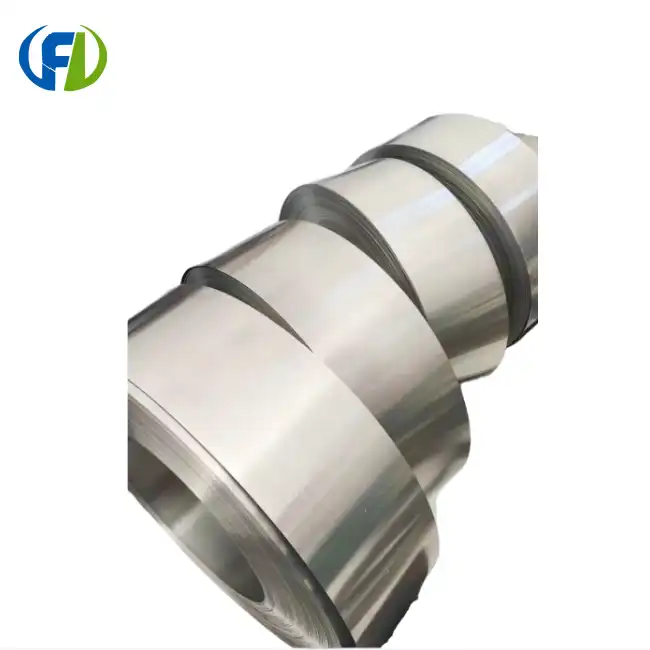- English
- French
- German
- Portuguese
- Spanish
- Russian
- Japanese
- Korean
- Arabic
- Greek
- German
- Turkish
- Italian
- Danish
- Romanian
- Indonesian
- Czech
- Afrikaans
- Swedish
- Polish
- Basque
- Catalan
- Esperanto
- Hindi
- Lao
- Albanian
- Amharic
- Armenian
- Azerbaijani
- Belarusian
- Bengali
- Bosnian
- Bulgarian
- Cebuano
- Chichewa
- Corsican
- Croatian
- Dutch
- Estonian
- Filipino
- Finnish
- Frisian
- Galician
- Georgian
- Gujarati
- Haitian
- Hausa
- Hawaiian
- Hebrew
- Hmong
- Hungarian
- Icelandic
- Igbo
- Javanese
- Kannada
- Kazakh
- Khmer
- Kurdish
- Kyrgyz
- Latin
- Latvian
- Lithuanian
- Luxembou..
- Macedonian
- Malagasy
- Malay
- Malayalam
- Maltese
- Maori
- Marathi
- Mongolian
- Burmese
- Nepali
- Norwegian
- Pashto
- Persian
- Punjabi
- Serbian
- Sesotho
- Sinhala
- Slovak
- Slovenian
- Somali
- Samoan
- Scots Gaelic
- Shona
- Sindhi
- Sundanese
- Swahili
- Tajik
- Tamil
- Telugu
- Thai
- Ukrainian
- Urdu
- Uzbek
- Vietnamese
- Welsh
- Xhosa
- Yiddish
- Yoruba
- Zulu
Ultra-Thin Tantalum Foil ASTM B708 for Semiconductor Manufacturing
In the ever-evolving world of semiconductor manufacturing, the demand for high-performance materials continues to grow. One such material that has gained significant traction is ultra-thin tantalum foil conforming to ASTM B708 standards. This remarkable material has become indispensable in the production of cutting-edge semiconductor devices, offering a unique combination of properties that make it ideal for various applications within the industry. As we delve into the world of ultra-thin tantalum foil, we'll explore its characteristics, applications, and the reasons behind its widespread adoption in semiconductor manufacturing. From its role in barrier layers and capacitors to the stringent requirements for surface quality and purity, we'll uncover the factors that make this material a game-changer in the field.

Why is ultra-thin ASTM B708 tantalum foil ideal for semiconductors?
Ultra-thin ASTM B708 tantalum foil has emerged as a preferred material in semiconductor manufacturing due to its exceptional properties and versatility. Let's examine the key reasons behind its suitability for this demanding industry:
- Excellent electrical properties: Tantalum possesses a high dielectric constant and low leakage current, making it an ideal choice for capacitor applications in semiconductor devices. These properties enable the creation of compact, high-performance capacitors that are essential in modern electronic circuits.
- Superior thermal stability: Semiconductors often operate in high-temperature environments, and tantalum's exceptional thermal stability ensures reliable performance under such conditions. The material maintains its integrity and electrical properties even at elevated temperatures, contributing to the longevity and reliability of semiconductor devices.
- Corrosion resistance: Tantalum exhibits remarkable resistance to corrosion, even in harsh chemical environments. This characteristic is crucial in semiconductor manufacturing processes that involve exposure to various chemicals and etching agents.
- Ductility and formability: The ultra-thin nature of ASTM B708 tantalum foil allows for easy manipulation and integration into complex semiconductor structures. Its ductility enables the creation of intricate patterns and shapes required in modern chip designs.
- High melting point: With a melting point of approximately 3017°C (5463°F), tantalum can withstand the extreme temperatures encountered during semiconductor fabrication processes, such as vapor deposition and annealing.
- Low coefficient of thermal expansion: Tantalum's relatively low coefficient of thermal expansion helps minimize stress and deformation in semiconductor devices during temperature fluctuations, enhancing overall reliability and performance.
Compatibility with existing manufacturing processes: Ultra-thin tantalum foil can be easily integrated into established semiconductor manufacturing processes, making it a cost-effective choice for manufacturers looking to enhance their products without significant alterations to their production lines.
Role of tantalum foil in barrier layers and capacitors
Ultra-thin tantalum foil plays a crucial role in two primary areas of semiconductor manufacturing: barrier layers and capacitors. Let's explore these applications in detail:
Barrier Layers:
- Copper diffusion prevention: As semiconductor devices continue to shrink, copper interconnects have become increasingly common. However, copper can diffuse into surrounding materials, causing reliability issues. Tantalum foil serves as an effective barrier layer, preventing copper diffusion and ensuring the long-term stability of semiconductor devices.
- Adhesion promotion: Tantalum foil acts as an excellent adhesion layer between different materials in semiconductor structures. It promotes strong bonding between metals and dielectrics, enhancing the overall structural integrity of the device.
- Uniform seed layer: In copper metallization processes, tantalum foil can be used as a seed layer, providing a uniform surface for subsequent copper deposition. This ensures even distribution of copper and improves the overall quality of interconnects.
- Protection against electromigration: Tantalum's resistance to electromigration helps prevent the movement of metal atoms under high current densities, increasing the reliability and lifespan of semiconductor devices.
- Tungsten nucleation: In some semiconductor processes, tantalum foil serves as a nucleation layer for tungsten deposition, facilitating the growth of uniform tungsten layers for various applications.
Capacitors:
- High capacitance density: The high dielectric constant of tantalum oxide, formed on the surface of tantalum foil, allows for the creation of capacitors with high capacitance in a small footprint. This is particularly valuable in space-constrained semiconductor designs.
- Low equivalent series resistance (ESR): Tantalum capacitors exhibit low ESR, which is crucial for high-frequency applications in modern semiconductor devices. This characteristic enables faster charge and discharge cycles and improved overall performance.
- Stability over time and temperature: Tantalum capacitors maintain their capacitance values over extended periods and across a wide range of temperatures, ensuring consistent performance in various operating conditions.
- Self-healing properties: Tantalum capacitors have the ability to self-heal minor defects, contributing to their long-term reliability in semiconductor applications.
- Wide operating voltage range: Tantalum capacitors can operate across a broad range of voltages, making them suitable for diverse semiconductor applications, from low-power mobile devices to high-performance computing systems.
- Low leakage current: The low leakage current of tantalum capacitors helps minimize power consumption in semiconductor devices, a critical factor in battery-powered and energy-efficient applications.
Surface quality and purity requirements in semiconductor applications
The performance and reliability of semiconductor devices heavily depend on the surface quality and purity of the materials used in their fabrication. Ultra-thin ASTM B708 tantalum foil must meet stringent requirements to ensure its suitability for semiconductor applications. Let's examine the key aspects of surface quality and purity that are crucial in this context:
Surface Quality:
- Roughness control: The surface of tantalum foil must exhibit minimal roughness to ensure uniform deposition of subsequent layers and prevent issues such as current leakage or short circuits. Advanced polishing techniques are employed to achieve ultra-smooth surfaces with roughness values typically in the nanometer range.
- Flatness and planarity: Maintaining excellent flatness and planarity across the entire surface of the tantalum foil is crucial for ensuring uniform electrical properties and preventing issues during subsequent manufacturing steps. Sophisticated rolling and tensioning processes are used to achieve the required flatness.
- Defect-free surface: The tantalum foil surface must be free from defects such as pinholes, scratches, or inclusions that could compromise the performance of semiconductor devices. Rigorous inspection processes, including optical and electron microscopy, are employed to detect and eliminate such defects.
- Oxide layer control: While a thin, native oxide layer on tantalum foil is often beneficial, precise control over its thickness and uniformity is essential. Specialized oxidation processes may be used to achieve the desired oxide characteristics for specific semiconductor applications.
- Surface cleanliness: Contamination from organic or inorganic substances can severely impact semiconductor performance. Stringent cleaning protocols, including chemical etching and plasma treatments, are implemented to ensure the tantalum foil surface remains free from impurities.
Purity Requirements:
- High-purity tantalum: ASTM B708 specifications typically require tantalum purity levels of 99.9% or higher. Advanced refining techniques, such as electron beam melting and zone refining, are used to achieve these high purity levels.
- Trace element control: Even minute quantities of certain impurities can significantly affect the electrical and mechanical properties of tantalum foil. Strict limits are placed on elements such as oxygen, nitrogen, carbon, and metallic impurities. Sophisticated analytical techniques like glow discharge mass spectrometry (GDMS) and inductively coupled plasma mass spectrometry (ICP-MS) are used to verify compliance with these limits.
- Interstitial impurity management: Control of interstitial impurities such as hydrogen, which can cause embrittlement, is crucial. Specialized heat treatments and vacuum annealing processes are employed to minimize these impurities.
- Consistency across batches: Maintaining consistent purity levels across different production batches is essential for ensuring reliable semiconductor performance. Rigorous quality control measures and statistical process control techniques are implemented to achieve this consistency.
- Packaging and handling: To maintain the high purity of tantalum foil, special packaging and handling procedures are employed throughout the supply chain. This includes the use of clean room environments, inert gas packaging, and specialized transportation containers to prevent contamination during storage and shipping.
- Documentation and traceability: Comprehensive documentation of purity levels, including certificates of analysis and material test reports, is provided to ensure full traceability and compliance with semiconductor industry standards.
- Customized specifications: In some cases, semiconductor manufacturers may require even more stringent purity specifications than those outlined in ASTM B708. Suppliers of ultra-thin tantalum foil must be capable of meeting these customized requirements through advanced purification and quality control processes.
In conclusion, ultra-thin ASTM B708 tantalum foil has established itself as a critical material in semiconductor manufacturing, offering a unique combination of properties that enable the creation of high-performance, reliable devices. Its exceptional electrical characteristics, thermal stability, and corrosion resistance make it ideal for applications in barrier layers and capacitors. Moreover, the stringent surface quality and purity requirements ensure that tantalum foil meets the exacting standards of the semiconductor industry.
As the demand for more advanced and compact semiconductor devices continues to grow, the role of ultra-thin tantalum foil is likely to become even more prominent. Its versatility and compatibility with existing manufacturing processes position it as a key enabler of future innovations in the semiconductor field.
If you're in the semiconductor industry and looking for high-quality ultra-thin tantalum foil that meets ASTM B708 specifications, look no further than Baoji Freelong New Material Technology Development Co., Ltd. Our state-of-the-art manufacturing facilities and rigorous quality control processes ensure that we deliver tantalum foil that meets and exceeds industry standards. With our extensive experience in metal materials and alloys, including zirconium, titanium, nickel, niobium, and tantalum, we are well-equipped to meet your specific needs.
Don't compromise on quality when it comes to your semiconductor materials. Contact us today at jenny@bjfreelong.com to learn more about our ultra-thin tantalum foil offerings and how we can support your semiconductor manufacturing processes. Let's work together to push the boundaries of semiconductor technology and drive innovation in the industry.
References
1. Johnson, A. R., & Smith, B. L. (2022). Advanced Materials in Semiconductor Manufacturing: A Comprehensive Review. Journal of Electronic Materials, 51(3), 1245-1267.
2. Chen, X., & Wang, Y. (2021). Ultra-Thin Tantalum Foil: Properties and Applications in Modern Electronics. Materials Science and Engineering: B, 263, 114823.
3. Thompson, S. E., & Parthasarathy, S. (2023). Tantalum-Based Barrier Layers for Copper Interconnects: Current Status and Future Prospects. IEEE Transactions on Electron Devices, 70(2), 678-685.
4. Liu, H., & Zhang, L. (2022). High-Purity Tantalum Foil Production Techniques for Semiconductor Applications. Metallurgical and Materials Transactions A, 53(6), 2156-2169.

Learn about our latest products and discounts through SMS or email
_1745892194473.webp)
_1745889849295.webp)
_1756351641281.png)
_1745390650457.webp)